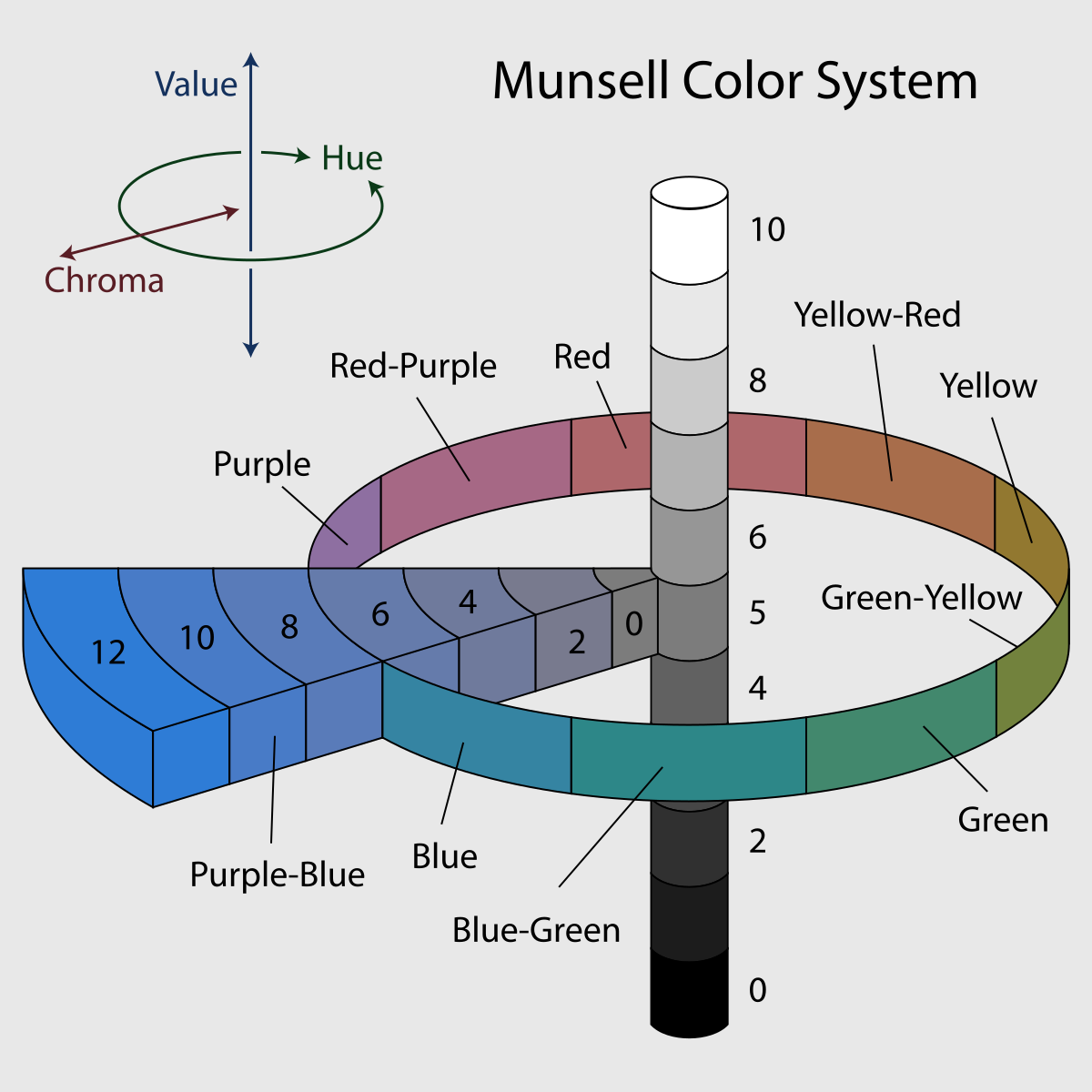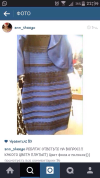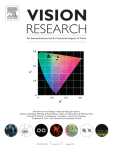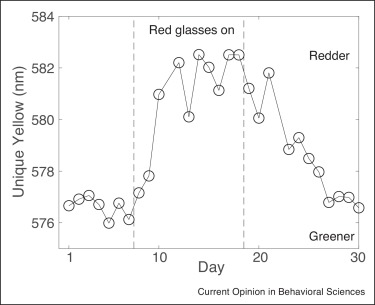I can't see gray rectangle in the left panel even now. I only see the purple one on the right side. May be my eye's can't recognize it.The rectangle in the right isn't really gray, more like a purple tone. But there is a gray one in the bottom left of the left image. Very hard to see though!
You are using an out of date browser. It may not display this or other websites correctly.
You should upgrade or use an alternative browser.
You should upgrade or use an alternative browser.
Color perception
- Thread starter Joe
- Start date
Tauriel
Dagobah Resident
I actually see a a clear reddish rectangle in the right pic upper left corner and one greyish in the left pic down on the left which is harder to see.I took that test but look... I do see a rectangle in the right picture, don't you?
They say I got it wrong and the rectangle is in the left picture.
All correct, although struggling with the song first.I.e. I took this test now twice
My eyesight isn't what it used to be but obviously colour seeing is good.
I saw white with aquamarine laces.
After I saw what color the shoe was "supposed" to be, I was able to change the color somewhat, but it only turns pink if I will it to and takes a fair amount of concentrated effort. I started by staring at the midpoint between the bottom lace and the little reflective side strip. I told my brain, "this is pink and these are white," and then stared at it for about 90 seconds. The shoe started to turn pink, and as it does the laces became less green. After the color changed, I started moving my eyes up the shoe, paralleling the side of each lace and then rested them on the heel. This causes the color change to become more pronounced. I then repeated the process, paralleling the laces on the far side and then rested my eyes on the knot. By this point, the shoe was a light/baby pink, and the laces were almost white, but retained a sky blue tinge. If I stop concentrating it goes back to white/aquamarine.
Anybody can doctor a photo and make some kind of "color test" out of it. I can make my hair green and my skin purple on my forum profile with just a couple of clicks, and most people would probably still be able to ascertain that I'm white. Assuming that it's an original photo taken by an actual camera, the lighting is totally weird. It reminds me of the florescence/phosphorescence effects that can be observed with some materials when a friend and I in would play around with UV lamps in high school. It's like your brain realizes you're looking into a higher frequency but since it's outside of optical tolerances it responds with neon and pearlescent artifacting. I actually imagined that the shoe was being illuminated by a UV-like device to account for the strange coloration, and it made it easier to imagine it as something different. My imagination became reality to some extent.
After I saw what color the shoe was "supposed" to be, I was able to change the color somewhat, but it only turns pink if I will it to and takes a fair amount of concentrated effort. I started by staring at the midpoint between the bottom lace and the little reflective side strip. I told my brain, "this is pink and these are white," and then stared at it for about 90 seconds. The shoe started to turn pink, and as it does the laces became less green. After the color changed, I started moving my eyes up the shoe, paralleling the side of each lace and then rested them on the heel. This causes the color change to become more pronounced. I then repeated the process, paralleling the laces on the far side and then rested my eyes on the knot. By this point, the shoe was a light/baby pink, and the laces were almost white, but retained a sky blue tinge. If I stop concentrating it goes back to white/aquamarine.
Anybody can doctor a photo and make some kind of "color test" out of it. I can make my hair green and my skin purple on my forum profile with just a couple of clicks, and most people would probably still be able to ascertain that I'm white. Assuming that it's an original photo taken by an actual camera, the lighting is totally weird. It reminds me of the florescence/phosphorescence effects that can be observed with some materials when a friend and I in would play around with UV lamps in high school. It's like your brain realizes you're looking into a higher frequency but since it's outside of optical tolerances it responds with neon and pearlescent artifacting. I actually imagined that the shoe was being illuminated by a UV-like device to account for the strange coloration, and it made it easier to imagine it as something different. My imagination became reality to some extent.
I took that test but look... I do see a rectangle in the right picture, don't you?
They say I got it wrong and the rectangle is in the left picture.
The devil is in the details. They asked about a rectangle in grey, the one you marked has a pinkish rectangle. I actually do see a greyish/purple-ish rectangle in the picture on the left

Here's the actual question:
Nope. I was just saying that some see it is pink immediately, some as grey. Those who see it as pink seem to be unconsciously and automatically correcting the color, since technically the color displayed on monitors isn't pink. (I see it as pink too, BTW, but that may be because I knew it was pink, having seen this one a year or so ago when it first started going around the internet. If I remember correctly, the first time I saw it, I saw grey. Funnily enough, I can't see the laces as white.)Fwiw, I saw pink before knowing the shoe was actually pink. Or are you saying something different?
Also took the test and got 31/36 (EDIT: oops, put the wrong results in at first), but there was one (the yellow box with number) that I couldn't see on one monitor. I dragged it over to my other monitor, at which point I could barely see it. Like Renaissance, I can see most of my mistakes when looking at the results, except for 2. (And one more that I could only see on my other monitor.)
Last edited:
Researchers suspect, though, that some people see even more. Living among us are people with four cones, who might experience a range of colors invisible to the rest. It’s possible these so-called tetrachromats see a hundred million colors, with each familiar hue fracturing into a hundred more subtle shades for which there are no names, no paint swatches. And because perceiving color is a personal experience, they would have no way of knowing they see far beyond what we consider the limits of human vision.
If you want to test how good you are at colour perception, there is the Farnsworth Munsell 100 Hue Test. Although it may not be adiquate for tetrachromats.

Farnsworth–Munsell 100 hue test - Wikipedia
A super short version can be found here: Free Online Color Challenge and Hue Test; X-Rite
And a full version (requires Flash Player software) can be found here (takes about 20 minutes): Farnsworth-Munsell 100 HueColor Vision Test – Colblindor
You need a good/properly calibrated monitor!
Did the quick one just now and got a perfect score (its much much easier than the full one).
I did the full version many years ago and got only 4 hues wrong I think (I have the result saved somewhere).
I'd be curious if people who see the shoe as pink/white do on the test compared to grey/aquamarine.
My guess would be that perhaps people who see it as grey/aquamarine might see more colours? Or at least have an easier time with the hue test.
If you do take the test, what colour did you see the shoe as?
It matters also the display.
I.e. I took this test now twice:
1. from my laptop and I´ve got 27 out of 36 correct.
2. from my iPhone and I´ve got 31 out of 36 correct
So we have multiple factors here: the display, the shades, the illumination and, of course, the person´s ability to distinguish colors.....
I tried it once and got 31 out 36 correct as well, but I think you are right about type of display mattering too.
Well I think that would be hard to do; the best would be if we are in the same room, under the same illumination, watching the same object.I'd be curious if people who see the shoe as pink/white do on the test compared to grey/aquamarine.
Or, to have exactly the same devices in our hands and do the observation it the daylight, so eliminating all artificial light.
The point of the test I´ve posted was to see how I´ve got different results on different devices and since we all here are connecting from different devices, we see different shades of colors or unable to see some colors.
It´s not the same when one has a business laptop with integrated graphics card or one has a computer with best graphics card (like Nvidia or AMD Radeon) with some ultra powerful monitor for graphic design.

When I learned that the shoe is actually pink, I also "could see" some pink in the shoe which wasn´t there before. But I believe it´s the first impression that counts, right, like a test on how different people are having different perception on the same object......
EDITED: spelling

Interesting. Yesterday, i saw the shoe as grey (but a weird shade) with turquoise laces. This morning i first took the magiquiz and came up 32 out of 36, 2 of which i don't see. Then i looked at the shoe again and the grey was now a weird shade of pink, laces still a turquoise shade though although my brain knows that it has to do with the lighting. I just did the Farnsworth short version test (all on macbook air) and had a perfect score of 0, looked back at the shoe, which is now a more proper pink but still with turquoise like laces.A super short version can be found here: Free Online Color Challenge and Hue Test; X-Rite
And a full version (requires Flash Player software) can be found here (takes about 20 minutes): Farnsworth-Munsell 100 HueColor Vision Test – Colblindor
I'd be curious if people who see the shoe as pink/white do on the test compared to grey/aquamarine.
My guess would be that perhaps people who see it as grey/aquamarine might see more colours? Or at least have an easier time with the hue test.
If you do take the test, what colour did you see the shoe as?
Years ago, my daughters showed me the dress picture and asked me what color i thought it was, i saw it as gold and white then, same for yesterday and today i still do, after the tests.

In case of the shoe, i think it's fun to see how with knowledge i actually see something different today on the same laptop sitting in the same spot with same type of lighting.
It's an interesting phenomenon, because for those seeing grey/blue variations, technically they're seeing what is in front of them, but missing the fact that the shoe itself is pink/white and the lighting is just off.
But the claim that the shoe is pink and white is not true. If I recolor an image that is pink and white, it is no longer pink and white. Saying that that was the 'original' color does not mean that that is still the color after I changed it. That said, IF the original color of the shoe was pink and white, it's interesting that some people see it that way after it was shaded. In fact, it's not just interesting, it's downright weird!

tschai
Dagobah Resident
DittoI see grey shoes and aquamarine laces
Also, was it on the last Mind Matters episode with Ken Pedersen where it was mentioned objects don't "have" color? Color is just the wavelengths that an object reflects + the wavelength of the light being shown on the object. Then the photons travel and get interpreted by your brain.
Taking the last sentence first:
It's downright weird!
Disregarding philosophical hairsplitting over primary and secondary qualities, I think it's common convention to refer to something's color as what it appears to be under normal (white light) conditions. Like Neil said above, "I can make my hair green and my skin purple on my forum profile with just a couple of clicks, and most people would probably still be able to ascertain that I'm white."
If you're looking at a white sheet of paper through yellow-tinted glasses, what color is the paper? Perhaps it would be best to say that when wearing such glasses, you perceive it as yellow, whereas under normal conditions (i.e. white light) it is white. It is white paper, filtered through yellow so that it is perceived as yellow.
So technically the pink/white people are technically correct in that the shoe itself as an object existing in the world IS pink and white, the same way Neil is white and not purple, regardless of whatever filters he applies to his picture of himself. What's most interesting and weird is, as you say, that some people SEE the picture as pink and white, when those are NOT the colors on the screen. That would be like looking at said picture of Neil and not being able to tell that it has a purple tint... Or looking through yellow-tinted glasses and SEEing white paper. So in that sense, they're wrong.
I've got a question for habitual blueblocker wearers: does it ever get to the point where you don't realize you're looking through tinted glasses, and see white objects AS white? What comes to mind is the inverted-glasses experiment where the subject wears glasses with mirrors configured to flip the visual field so the world is upside down. After some days, they become habituated to it and can function normally, as if the world is right-side up. But then, after taking off the glasses, the world is "flipped" again, and it takes up to a day to recover the sense of normality.

 en.wikipedia.org
en.wikipedia.org
And one YouTuber's experiment doing so:
Writing the above made me wonder about adaptive effects of the visual system regarding color perception. Found a couple papers that might be relevant:

 www.sciencedirect.com
www.sciencedirect.com

 www.sciencedirect.com
www.sciencedirect.com
It looks like adaptation of the type I mention above does happen:
Here's a graph showing the phenomenon:

If I'm reading it correctly, what you're seeing in the right third of the graph is literally a progressive change in the subjective perception of a color under ordinary lighting conditions. After removing the red glasses, the perception of the color yellow actually changes, which is quite amazing!
However, when this paper was published (late 2019), it was unknown if vision ever achieves "full normalcy" while wearing tinted glasses longterm, as it seems to do in the inverted-glasses experiments.
They offer this possible (though partial) explanation for the phenomenon: "Adapting to colored lenses likely also depends upon second-stage ‘color-opponent’ mechanisms that compute sums and differences of cone signals." Not sure precisely what that means, but my guess is that the visual system is used to certain 'ratios' and contrasts of color frequencies. When the visual field is biased in some consistent way (e.g., light of a particular color, tint, etc.), the visual system automatically compensates by "recalculating" the ratios based on how much they deviate from normal conditions, trying to achieve normality of color perception utilizing a more limited palette of colors reaching the visual field.
Given all that, what's remarkable to me is that some people instantly see pink/white sneakers. It is as if their visual system immediately concludes that there is a cyan tint to the photo and adapts immediately. No long-term wearing of tinted glasses necessary!
That said, IF the original color of the shoe was pink and white, it's interesting that some people see it that way after it was shaded. In fact, it's not just interesting, it's downright weird!
It's downright weird!

But the claim that the shoe is pink and white is not true.
Disregarding philosophical hairsplitting over primary and secondary qualities, I think it's common convention to refer to something's color as what it appears to be under normal (white light) conditions. Like Neil said above, "I can make my hair green and my skin purple on my forum profile with just a couple of clicks, and most people would probably still be able to ascertain that I'm white."
If you're looking at a white sheet of paper through yellow-tinted glasses, what color is the paper? Perhaps it would be best to say that when wearing such glasses, you perceive it as yellow, whereas under normal conditions (i.e. white light) it is white. It is white paper, filtered through yellow so that it is perceived as yellow.
So technically the pink/white people are technically correct in that the shoe itself as an object existing in the world IS pink and white, the same way Neil is white and not purple, regardless of whatever filters he applies to his picture of himself. What's most interesting and weird is, as you say, that some people SEE the picture as pink and white, when those are NOT the colors on the screen. That would be like looking at said picture of Neil and not being able to tell that it has a purple tint... Or looking through yellow-tinted glasses and SEEing white paper. So in that sense, they're wrong.
I've got a question for habitual blueblocker wearers: does it ever get to the point where you don't realize you're looking through tinted glasses, and see white objects AS white? What comes to mind is the inverted-glasses experiment where the subject wears glasses with mirrors configured to flip the visual field so the world is upside down. After some days, they become habituated to it and can function normally, as if the world is right-side up. But then, after taking off the glasses, the world is "flipped" again, and it takes up to a day to recover the sense of normality.

George M. Stratton - Wikipedia
And one YouTuber's experiment doing so:
Writing the above made me wonder about adaptive effects of the visual system regarding color perception. Found a couple papers that might be relevant:

Habitual wearers of colored lenses adapt more rapidly to the color changes the lenses produce
The visual system continuously adapts to the environment, allowing it to perform optimally in a changing visual world. One large change occurs every t…
Vision is known to adapt to such changes in spectral power. For example, illuminating the surround of a constant test patch with lights of different colors produces large changes in test appearance (e.g. Chichilnisky and Wandell, 1999, Rinner and Gegenfurtner, 2000; for a review see Foster, 2011). Some of this color adaptation happens immediately, and so is often labeled color contrast, while some of it arises more gradually (Fairchild and Reniff, 1995, Rinner and Gegenfurtner, 2000, Shevell, 2001). In the present study, wearing reddish filters made a reddish test light appear more neutral in color. The most common explanation for such adaptation is that the rest of the image, which appears more reddish than usual and is relatively dominated by longer wavelength light, causes a reduction in the strength of signals from the long wavelength cones relative to the strength of signals from the other cone types, through some sort of scaling process (for reviews, see Rieke and Rudd, 2009, Foster, 2011). Note that such adaptation partially compensates for the tint produced by the filters, making the visual world more “normal”, as reddish colors become more neutral (Webster & Leonard, 2008). Greenish filters produce effects in the opposite direction.
If the visual system can learn to adapt to spectacles, then observers who routinely wear colored filters should show larger and more rapid color adaptation than naïve observers wearing those same filters. We tested this possibility, measuring adaptation by recording the effects of a large, uniform surround on the color appearance of a central target. Observers wore and removed colored filters, which changed the spectral power of the surround. Appearance of the target was measured by having participants set it to be “unique yellow”, a shade that appears to contain neither any red nor any green (Jameson & Hurvich, 1955). As subjects adapted to the donning or removal of the spectacles, the appearance of the target changed over time, and this adaptation was tracked through repeated measurements of unique yellow. We found more rapid and larger adaptation to colored filters in habitual wearers than in control participants.

Long-term adaptation to color
When the environment changes, the visual system adjusts to maintain accurate color perception. Such adaptations happen at different time scales, and l…
Highlights
When the environment changes, the visual system adjusts to maintain accurate color perception. Such adaptations happen at different time scales, and long-term effects are of particular interest because they may engage mechanisms of long-lasting neural plasticity. Long-term adaptation to changes in the color of the environment produce strong and long-lasting changes in color perception, with the general effect of neutralizing the dominant color. Large individual differences and details of the time course are currently unexplained, and the limits of adaptation remain unexplored. Experience with an environment appears to allow observers to adapt more strongly and quickly to it. Long-term color adaptation may serve as a model system for understanding general mechanisms of neural plasticity, including those relevant for therapies for visual disorders.
- Many aspects of long-term color adaptation, including its neural bases, remain unexplored.
- The major effect of long-term adaptation to a colored lens or illuminant is to restore the world to its previous appearance
- This adaptation to color grows stronger over days and weeks via mechanisms that are distinct from shorter-term adaptation.
- Learning of familiar color environments appears to strengthen and hasten effects of adaptation in those environments.
It looks like adaptation of the type I mention above does happen:
When the mean color coordinates of the environment shift suddenly away from what we are accustomed to, the color appearance of the world gradually shifts back toward what is was before the change. For example, immediately after putting on sunglasses the world appears tinged with the lenses' color, but the tint fades over time. The first published observation of this phenomenon was in 1694 by de la Hire [11], a polymath better known for contributions to astronomy and mathematics. In many situations, particularly for smaller changes in illumination or lens color, much of the compensation happens instantly and has been studied as ‘color constancy’ (for reviews, see Refs. [12,13]). Other perceptual consequences evolve over time. Short-term effects of adaptation to changes in mean color coordinates, from seconds to minutes, have been well characterized [14,15].
Though the manipulation required for studying longer-term changes is remarkably simple — observers can just wear colored lenses or sit in a room with filtered lighting over a number of days — surprisingly few multiple day experiments have been conducted. The first published report consisted of a single observer’s qualitative observation that the world regained its normal appearance over time [16]. Since that time, fewer than 20 observers have been tested in total, with about one paper appearing every decade [9,10,16, 17, 18, 19,20••].
What are the effects of multiple days’ adaptation to colored lenses? Formal measurements agree with Kohler’s initial observations that the world viewed through the lenses comes to regain its prior appearance. For example, wearing red glasses or being exposed to a red environment causes unique yellow settings to shift by greater and greater amounts across days (Figure 2; [8,9,18]). The shift is in the direction of more reddish color coordinates, indicating that what previously appeared reddish is becoming more neutral over time, canceling the effects of the lenses or lighting. Effects of multiple-day adaptation are much longer lasting than the effects of short-term adaptation [8], remaining robust when measured the morning after a day of wearing lenses, before donning them for a subsequent day [9,18,19]. Because of this endurance, observers often are adapted for only part of each day [9,18,19,20••].
Here's a graph showing the phenomenon:

If I'm reading it correctly, what you're seeing in the right third of the graph is literally a progressive change in the subjective perception of a color under ordinary lighting conditions. After removing the red glasses, the perception of the color yellow actually changes, which is quite amazing!
However, when this paper was published (late 2019), it was unknown if vision ever achieves "full normalcy" while wearing tinted glasses longterm, as it seems to do in the inverted-glasses experiments.
They offer this possible (though partial) explanation for the phenomenon: "Adapting to colored lenses likely also depends upon second-stage ‘color-opponent’ mechanisms that compute sums and differences of cone signals." Not sure precisely what that means, but my guess is that the visual system is used to certain 'ratios' and contrasts of color frequencies. When the visual field is biased in some consistent way (e.g., light of a particular color, tint, etc.), the visual system automatically compensates by "recalculating" the ratios based on how much they deviate from normal conditions, trying to achieve normality of color perception utilizing a more limited palette of colors reaching the visual field.
Given all that, what's remarkable to me is that some people instantly see pink/white sneakers. It is as if their visual system immediately concludes that there is a cyan tint to the photo and adapts immediately. No long-term wearing of tinted glasses necessary!
Last edited:
Like Neil said above, "I can make my hair green and my skin purple on my forum profile with just a couple of clicks, and most people would probably still be able to ascertain that I'm white."
Hmm...ok, but wouldn't it be based on the assumption that a person with such facial characteristics is usually white? Meaning, that people are doing an automatic correction in their mind based on their prior experience.
But if, for example, a person would color their hair and eyebrows, would we be able to ascertain with certainty the orginal color of their hair in the same way? And would we make the same automatic correction and see them with their original color?
That's I think the point and the difference between the shoe picture and the color test. While it is true that the color test seems to depend on various factors and configurations (different phones and monitors), it is still perplexing that different people can look at the same monitor (with the same settings) and see different colors. And somehow some of these people see beyond the filter and are able to see the original color.
Or do they? Because what could be also said that these people disregard things as they are now, i.e don't see the reality as it is now. And what is actually better or right?
But then, it is probable that the same people would look at the same shoe in reality, and see the same thing (pink and white). Unless they do have color blindness of some sorts.
So perhaps in this sense it does have to do with the monitor. And in this sense the monitor acts as an additional reality "separating"/"one step removed" factor. And some people are able to disregard this separation and see it as it would appear in reality, and some see it just like it is on the screen.
I think that this silly pic just helps us realize how much we don't understand about our brain and the reality around us. But what I find MOST perplexing is that despite such differences in perception, we are still somehow able to orient ourselves in this world, and particularly communicate and interact with other people, as if we were seeing similar things.

Meaning, that despite the differences in some aspects of perception, crucial elements are still the same. I find it totally fascinating.
Last edited:
Trending content
-
Thread 'Coronavirus Pandemic: Apocalypse Now! Or exaggerated scare story?'
- wanderingthomas
Replies: 30K -
-
